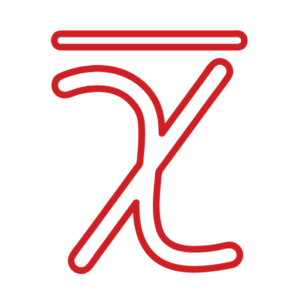Course Name:Language Arts
Course Description
In Grade 1 Language, our students are introduced to words and language in several ways. By learning various texts and forms of media, they will develop the foundational knowledge and skills needed to establish a firm basis in the English Language.

Curriculum Information: Language (2008)

Course Developer: Canadian Global School

Development Date: 2022
Course Outline
Grade 1 Language Arts - Total Hours (158 Hours)
Unit One: Writing (40Hours)
Unit Two: Oral Communication (39 Hours)
Furthermore, they will learn to distinguish between fictional and personal stories. Lastly, they will identify and reflect on the following areas: their strengths as listeners and speakers and their areas for improvement.
Unit Three: Reading (40 Hours)
To conclude, they will learn to identify critical information in a text, short novel or media text.
Unit Four: Media Literacy (39 Hours)
Resources Needed
This course is entirely online and does not require nor rely on any textbook. Students will need the following resources:
- Laptop and/or personal computer (preferably with Google Chrome or Mozilla Firefox as a web browser)
- Stable internet connection
- A scanner, smartphone camera, or similar device to digitize handwritten or hand-drawn work
- A device to record audio
- A physical binder, folder, or notebook for offline activities
- Various household items to complete offline activities
Resources required by the student:
- Laptop and/or personal computer (preferably with Google Chrome or Mozilla Firefox as a web browser)
- Access to video recording and handwritten work scanning (mobile phone, tablet, iPad, webcams)
- Stable internet connection
Note: This course is entirely online and does not require or rely on any textbook.
Teaching Strategies
Using a variety of instructional strategies, the teacher will provide numerous opportunities for students to develop skills of inquiry, problem-solving, and communication as they investigate and learn fundamental concepts. The integration of critical thinking and critical inquiry skills will provide a powerful tool:
- Interact in student-paced and instructor-paced interactive, engaging instructional lessons.
- Understand the value of diversity in learning and society
- Develop self-confidence and self-advocacy skills
- Refine their existing compensatory strategies (reading strategies, writing strategies, listening strategies, study strategies, researching strategies, strategies for memory, organizational strategies, and time management strategies) for learning and develop additional strategies to help meet their potential as learners and use throughout the elementary grades.
- Cultivate problem-solving skills to become independent learners.
- Opportunities to learn in various ways- individually, cooperatively, independently, with teacher direction, hands-on experiences, and through examples followed by practice.
- Accomplish prompts on interactive lessons; students can reflect on different texts. In addition, constant communication with teachers ensures that the students understand complex topics and apply them in their writing. They can also accomplish other tasks using animations, videos, discussion forums, live chat, and other interactive objects.
The course relies on the help of a teacher to support young learners through the lessons. The teacher will be working on facilitating the course content and participating in discussions to support students in developing communication skills.
Course Name:Math
Course Description
In Grade 1 Math, our students are introduced to numbers in various
ways. By exploring basic concepts such as addition, subtraction, measurement, and patterns, they will start their journey to mastery of Mathematics.

Curriculum Information:Mathematics (2020)

Course Developer: Canadian Global School

Development Date: 2022
Course Outline
Grade 1 Math -Total Hours (158 Hours)
Unit One: Numbers 1 to 10 (16Hours)
Unit two: Numbers to 20 (16Hours)
Unit Three: Addition to 10 (16Hours)
Unit Four: Subtraction to 10 (16Hours)
Unit Five: Graphing, Money, and Financial Literacy (15Hours)
Unit Six: Numbers to 100 (16Hours)
Unit Seven: Addition to 20 (16Hours)
Unit Eight: Subtraction to 20 (16Hours)
Unit Nine: Measurement and Time (16Hours)
Unit Ten: Shapes, Positioning, and Fractions (15 Hours)
Resources required by the student:
- A scanner, smartphone camera, or similar device to upload handwritten or hand-drawn work,
- Laptop and/or personal computer (preferably with Google Chrome or Mozilla Firefox as a web browser)
- Access to video recording and handwritten work scanning (mobile phone, tablet, iPad, webcams)
- Stable internet connection
Resources provided by Canadian Global School
- Access to Google Suites or Microsoft Education for word processing software and presentation software. (The school will distribute accounts to students).
- Supplemental Readings
Note: This course is entirely online and does not require or rely on any textbook.
Resources Needed:
This course is entirely online. It does not require nor rely on any textbook.
Students will need the following resources:
- Laptop and/or personal computer (preferably with Google Chrome or Mozilla Firefox as a web browser)
- Stable internet connection
- A scanner, smartphone camera, or similar device to digitize handwritten or hand-drawn work
- Measurement tools (ruler)
- Household items to complete offline activities

Teaching Strategies
Using various instructional strategies, the teacher will provide numerous opportunities for students to develop inquiry, problem-solving, and communication skills as they investigate and learn fundamental concepts. The integration of critical thinking and critical inquiry skills will provide a powerful tool for reasoning and problem solving and is reflected in a meaningful blend of both process and content.
Throughout this course, students will:
- Interact in student-paced and instructor-paced interactive, engaging instructional lessons.
- Develop self-confidence and self-advocacy skills
- Refine their existing compensatory strategies for learning and develop additional strategies to help meet their potential as learners and use them throughout the elementary grades.
- Cultivate problem-solving skills to become independent learners.
- Opportunities to learn in various ways- individually, cooperatively, independently, with teacher direction, through hands-on experiences, and through examples followed by practice.
- Accomplish prompts on interactive lessons. Students can reflect on different texts. In addition, constant communication with teachers ensures that the students understand complex topics and apply them in their writing. They can also accomplish other tasks by using animations, videos, discussion forums, live chat and other interactive objects.
Course Name:Science
Course Description
In Grade 1 Science, our students are introduced to science and its place in the world. They will learn about living things, simple structures, the sun, and energy and better understand the Earth.

Curriculum Information: Science (2022)

Course Developer: Canadian Global School

Development Date: 2022
Course Outline
Grade 1 Science -Total Hours (95 Hours)
Unit One: Needs & Characteristics of Living Things (24Hours)
Unit Two: Materials, Objects, and Everyday Structures (24-Hours)
They will investigate the characteristics of these materials. They will determine what happens to objects when they are no longer needed and how to prevent them from harming the environment.
Unit Three: Understanding Matter and Energy (24-Hours)
Unit Four: Understanding Earth and Space Systems (23-Hours)
Resources required by the student:
- A scanner, smartphone camera, or similar device to upload handwritten or hand-drawn work,
- Laptop and/or personal computer (preferably with Google Chrome or Mozilla Firefox as a web browser)
- Access to video recording and handwritten work scanning (mobile phone, tablet, iPad, webcams)
- Stable internet connection
Resources provided by Canadian Global School
- Access to Google Suites or Microsoft Education for word processing software and presentation software. (The school will distribute accounts to students).
- Supplemental Readings
Note: This course is entirely online and does not require or rely on any textbook.
Resources Needed:
This course is entirely online and does not require nor rely on any textbook. Students will need the following resources:
- Laptop and/or personal computer (preferably with Google Chrome or Mozilla Firefox as a web browser)
- Stable internet connection
- A scanner, smartphone camera, or similar device to digitize handwritten or hand-drawn work
- Various household items to complete offline activities

Teaching Strategies
Using a variety of instructional strategies, the teacher will provide numerous opportunities for students to develop skills of inquiry, problem-solving, and communication as they investigate and learn fundamental concepts.
The integration of critical thinking and critical inquiry skills will provide a powerful tool for reasoning and problem solving and is reflected in a meaningful blend of both process and content.
Throughout this course, students will:
- Interact in student-paced and instructor-paced interactive, engaging instructional lessons.
- Develop self-confidence and self-advocacy skills
- Refine their existing compensatory strategies for learning and develop additional strategies to help meet their potential as learners and use them throughout the elementary grades.
- Cultivate problem-solving skills to become independent learners.
- Opportunities to learn in various ways- individually, cooperatively, independently, with teacher direction, through hands-on experiences, and through examples followed by practice.
- Accomplish prompts on interactive lessons. Students can reflect on different texts. In addition, constant communication with teachers ensures that the students understand complex topics and apply them in their writing. They can also accomplish other tasks by using animations, videos, discussion forums, live chat and other interactive objects.
Course Name: Computer Science
Course Description
In Grade 1 Computer Science, students will read and alter existing code, including code that involves sequential events, and describe how changes to the code affect the outcomes. Students will engage in more sophisticated unplugged activities and solve a broader range of puzzles. Students will learn the fundamentals of programming collaboration, investigation and critical thinking skills, persistence in the face of difficulty, and internet safety.

Course Developer: Canadian Global School

Development Date: 2022
Course Outline
Grade 1 Computer Science -Total Hours (63 Hours)
Unit One: Intro to Programming (31-Hours)
Unit Two: Conditionals (32-Hours)
Resources required by the student:
- A scanner, smartphone camera, or similar device to upload handwritten or hand-drawn work,
- Laptop and/or personal computer (preferably with Google Chrome or Mozilla Firefox as a web browser)
- Access to video recording and handwritten work scanning (mobile phone, tablet, iPad, webcams)
- Stable internet connection
Resources provided by Canadian Global School
- Access to Google Suites or Microsoft Education for word processing software and presentation software. (The school will distribute accounts to students).
- Supplemental Readings
Note: This course is entirely online and does not require or rely on any textbook.
Resources Needed:
This course is entirely online and does not require nor rely on any textbook. Students will need the following resources:
- Laptop and/or personal computer (preferably with Google Chrome or Mozilla Firefox as a web browser)
- Stable internet connection

Teaching Strategies
Using a variety of instructional strategies, the teacher will provide numerous opportunities for students to develop skills of inquiry, problem-solving, and communication as they investigate and learn fundamental coding concepts. The integration of critical thinking and critical inquiry skills will provide a powerful tool for reasoning and problem solving, and is reflected in a meaningful blend of both process and content. Throughout this course, students will:
- Interact in student-paced and instructor-paced interactive, engaging instructional lessons.
- The content is web-based, with students writing and running code in the browser.
- Teachers utilize tools and resources provided by Kodable to leverage time in the classroom and give focused 1-on-1 attention to students.
Course Name: Social Studies
Course Description
In Grade 1 Social Studies, our students are introduced to changing roles and responsibilities in the local community. They will also investigate their local community, study natural and built features, and the different areas and services available. They will then analyze maps and understand how they can be used to provide directions around where they live.

Curriculum Information:Social Science (2018)

Course Developer: Canadian Global School

Development Date: 2022
Course Outline
Grade 1 Social Studies - Total Hours (63 Hours)
Unit One: Changing Roles and Responsibilities (32-Hours)
Unit Two: The Local Community (31-Hours)
Resources required by the student:
- A scanner, smartphone camera, or similar device to upload handwritten or hand-drawn work,
- Laptop and/or personal computer (preferably with Google Chrome or Mozilla Firefox as a web browser)
- Access to video recording and handwritten work scanning (mobile phone, tablet, iPad, webcams)
- Stable internet connection
Resources provided by Canadian Global School
- Access to Google Suites or Microsoft Education for word processing software and presentation software. (The school will distribute accounts to students).
- Supplemental Readings
Note: This course is entirely online and does not require or rely on any textbook.
Resources Needed:
This course is entirely online and does not require nor rely on any textbook. Students will require the following resources:
- Laptop and/or personal computer (preferably with Google Chrome or Mozilla Firefox as a web browser)
- Stable internet connection
- A scanner, smartphone camera, or similar device to digitize handwritten or hand-drawn work
- A device to record audio
- Various household items to complete offline activities

Teaching Strategies
Using a variety of instructional strategies, the teacher will provide numerous opportunities for students to develop skills of inquiry, problem solving, and communication as they investigate and learn fundamental concepts. The integration of critical thinking and critical inquiry skills will provide a powerful tool for reasoning and problem solving, and is reflected in a meaningful blend of both process and content Throughout this course students will:
- Interact in student-paced and instructor-paced interactive, engaging instructional lessons.
- Understand the value of diversity in learning and in society
- Refine their existing compensatory strategies for learning and develop additional strategies to help meet their potential as learners and use them throughout the elementary grades.
- Cultivate problem-solving skills to become independent learners.
- Opportunities to learn in various ways- individually, cooperatively, independently, with teacher direction, through hands-on experiences, and through examples followed by practice.
- Accomplish prompts on interactive lessons, students can reflect on different texts. In addition, constant communication with teachers ensures that the students understand complex topics and apply them in their writing. They can also accomplish other tasks through the use of animations, videos, discussion forums, live chat and other interactive objects.
The course relies on the help of a teacher to support young learners through the






